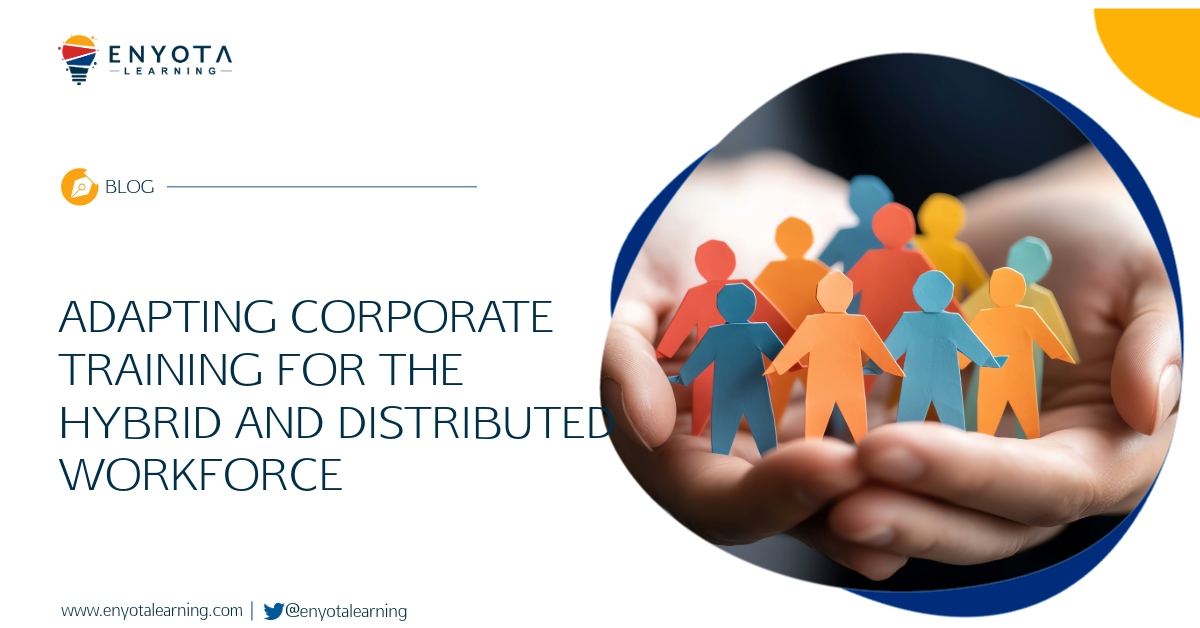The influx of digital technology is redefining the way we live and conduct business. Digital tools, services, and solutions are working hard to improve productivity and business outcomes and we are witnessing the rise of new technologies that are changing the nature of work and also the nature of interactions at the workplace. Artificial Intelligence and Machine Learning are now working their way into the daily operations of global companies and there’s no denying that both of them are set to make big changes. In fact, according to an Infosys study, 76% of senior decision-makers now believe that Artificial intelligence is fundamental to the success of their organization’s strategy. Those using AI or planning to use AI are anticipating a 39% boost in their organizational revenue owing to this technology. Another article published by Forbes shows how AI and Machine Learning are permeating different business verticals in the enterprise and Learning and Development is one of them.
As the wealth of data increases exponentially, artificial intelligence and machine learning continue to rise in importance because companies now need technology that processes, trends, and analyzes information from all this data. With AI, organizations get access to “Insights-as-a-Service”, a trend that is gradually on its way to becoming an organizational mainstay.
Artificial Intelligence and Machine Learning Reshape the L&D Function
In L&D, Context is King
The world is gravitating towards self-service. L&D initiatives are no longer just a checkbox to tick (if they ever were) but they are key to a viable employee engagement and retention strategy. However, these initiatives have to be more targeted, individualized, and personalized. These initiatives are a vehicle to push enablement closer to work. While providing information, access is important. It is even more important to give information intelligently to ensure that it is relevant to the user and is delivered when the user needs it.
The days of the ‘one size fits all’ approach is behind us. Given the volume of the data deluge that organizations are facing, L&D departments have to now collect and analyze these huge data volumes to create customized learning programs. This can be achieved by leveraging AI and Machine Learning. With AI and ML, departments can make sense of the data they are accessing and leverage the insights to gain a better understanding of the learner to create learning and training programs that drive value and enable adaptive learning.
The Push Towards ‘Experience Design’
In an article. The Disruption of Digital Learning: Ten Things We Have Learned, world-known industry analyst and founder of Bersin by Deloitte, Josh Bersin states, “Today learning is about ‘flow’ not “instruction,” and helping bring learning to people throughout their digital experience.”
To meet the learning needs of the workforce of today (an increasing number of whom are millennials) L&D departments have to bring their focus to “experience design,” “employee journey maps,” and other such data-driven, solutions. This is key to understand their employee’s roles and pain points and to, then, employ the latest tools and technologies to drive learning and performance. AI and Machine Learning become relevant here as it helps these departments understand not only how the employees learn but also when they learn effectively.
The Focus on Up-Skilling
In the fast-changing world, learning initiatives have to be proactive and HR and L&D departments are faced with the challenge to ensure that the relevant growth tools and knowledge resources are available to their workforce when they want them. With industries evolving rapidly owing to disruptive tech adoption, organizations are faced with the challenge of upskilling their workers. Even a “traditional” sector like manufacturing, for example, has completely changed because of Industry 4.0. This sector has to expend significant energy efforts to upskill their employees to reduce the skills gap and create opportunities to innovate.
AI and ML-enabled upskilling programs help L&D departments proactively improve the instructional content creation, provide proactive feedback, enable faster instruction design, and personalize performance coaching. AI and ML can suggest training paths for employees, make recommendations on training programs, quantify the success of the programs, and leverage the right metrics to make learning and development initiatives a success.
Ensure Better Completion Rates
Even today, HR and L&D departments are battling the uphill challenge of MOOC completion rates. Data shows that even the best MOOC’s have only a 10-15% completion rate. However, with the use of AI and ML, these departments can drive up completion rates by providing topical and relevant context to help employees understand the specific need for the training. These two technologies also provide more insight into learning patterns and drive the right learning resources and training programs for individuals to create a motivating learning culture, ensure better learning outcomes, and completion rates.
According to a Forbes article, “Humans simply can’t keep up with the speed at which technology and customer demands are moving. That’s why more and more businesses are moving toward harnessing the power of conversational AI chatbots and other virtual assistants to manage the day-to-day flow of work.” This could hold true even in the case of Learning and Development as the focus on personalization, performance mapping and adaptive learning increases and learning platforms are forced to deliver Spotify or Netflix like experiences. Clearly, there’s change ahead. Write to us at contact@enyotalearning.com or click on this form link to contact us.





